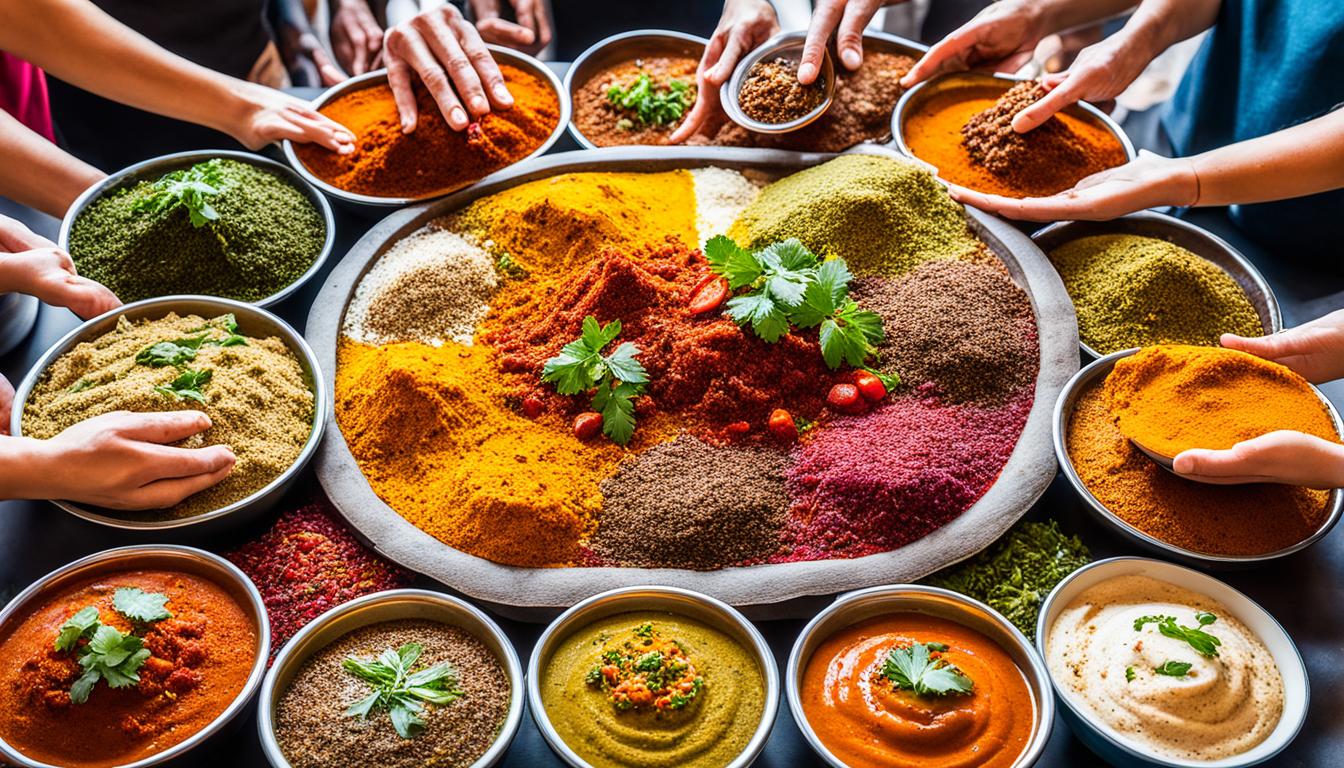Why Is Ethiopian Food Eaten With Hands?
When it comes to dining, many of us are accustomed to using utensils like forks and knives. But have you ever wondered why Ethiopian food is traditionally eaten with hands? This cultural practice goes beyond practicality and dives deep into the heart of Ethiopian cuisine. So, why exactly do Ethiopians choose to eat with their hands? Let’s unravel the mystery and discover the sensory and cultural benefits behind this age-old tradition.
Key Takeaways:
- Eating Ethiopian food with hands is a cultural practice rooted in communal dining and the use of injera.
- Injera, a staple Ethiopian bread, serves as a plate and utensil for picking up flavorful stews and dishes.
- Observing cultural etiquette, such as hand washing and the act of gursha, enhances the dining experience.
- Eating from a communal plate fosters a sense of togetherness and connection among diners.
- Embracing the hand eating tradition allows you to fully immerse yourself in the flavors and textures of Ethiopian cuisine.
The Significance of Injera and Wot
In Ethiopian cuisine, two essential elements play a significant role in creating a unique and flavorful dining experience: Injera and Wot.
Injera, a flat and sourdough-like bread, is made from teff, wheat, barley, or millet. It serves a dual purpose as both a plate and utensil. The spongy texture and tangy flavor of injera make it the perfect accompaniment to the rich and spicy wots, which are traditional stews made with vegetables or meat cooked in a flavorful sauce. When enjoying a traditional Ethiopian meal, the wots are placed on top of the injera, and the bread is used to scoop up the delicious stew.
The combination of injera and wot is a staple in Ethiopian cuisine and plays a crucial role in the tradition of eating with hands. The injera acts as a vessel for the wot, allowing for a tactile and communal dining experience. Every mouthful is a burst of vibrant flavors, with the softness of the injera balancing the intensity of the wot. It is this combination that makes Ethiopian cuisine so distinct and beloved by food enthusiasts worldwide.
Cultural Etiquette and Practices

When enjoying Ethiopian food, there are important mealtime etiquette practices to observe. These customs reflect the cultural values and traditions of Ethiopia and contribute to a respectful and communal dining experience.
Firstly, it is customary to eat Ethiopian food with the right hand. In Ethiopian culture, the left hand is considered unclean and reserved for personal hygiene purposes. By using the right hand, we show respect for the food and those sharing the meal with us.
Before and after the meal, it is essential to wash our hands thoroughly. This practice promotes hygiene and ensures that we approach the meal with clean hands. By washing our hands, we demonstrate our respect for the food and the dining experience.
Another unique practice in Ethiopian culture is the gursha, which involves placing a morsel of food directly into someone’s mouth. The gursha is a gesture of respect, friendship, and hospitality. By offering a gursha, we deepen our connection with our dining companions and show our appreciation for their presence.
The Importance of Respect
Respect for elders is an integral part of Ethiopian culture. It is considered polite to allow elders to begin eating before us. This practice highlights the value placed on elders’ wisdom, experience, and leadership within the community. By waiting for elders to initiate the meal, we show our respect and honor their position in Ethiopian society.
These cultural etiquette and practices involving mealtime etiquette, hand washing, gursha, and respect contribute to the overall experience of dining in an Ethiopian setting. By adhering to these customs, we can fully immerse ourselves in Ethiopian culture, foster a sense of community, and enjoy a more authentic and meaningful dining experience.
The Sociable Aspect of Ethiopian Dining
Ethiopian dining is known for its sociable aspect. Most traditional Ethiopian meals are served on a communal plate, allowing everyone at the table to share and bond over the food. Eating from a communal plate promotes a sense of togetherness and creates an intimate dining experience. Sharing a platter and eating with hands can help build connections and foster deeper conversations. The Ethiopian cuisine and dining style provide a unique opportunity for bonding with others.
Conclusion
Ethiopian cuisine offers a culinary adventure that extends beyond the taste buds. Not only does it tantalize your palate with a myriad of flavors and spices, but it also takes you on a cultural journey. One of the unique aspects of Ethiopian dining is the tradition of eating with hands, which adds a sensory element to the experience.
When you eat with your hands, you engage not only your taste buds but also your sense of touch. The act of tearing off a piece of injera and scooping up a mouthful of savory wot allows you to fully immerse yourself in the textures and flavors of the food. It’s a truly hands-on culinary experience that heightens the enjoyment of each bite.
Furthermore, dining in an Ethiopian restaurant offers a cultural experience like no other. By embracing the hand eating tradition and following the cultural practices, you become a part of the Ethiopian community for a brief moment. Sharing a communal plate and breaking bread together fosters a sense of togetherness and connection, creating a unique and intimate dining atmosphere.
So, the next time you have the opportunity to experience Ethiopian cuisine, don’t be shy to dig in with your hands. Immerse yourself in the cultural practices and embrace the sensory benefits it brings. Indulge in a rich and authentic Ethiopian meal that not only satisfies your appetite but also nourishes your soul. Bon appétit!







